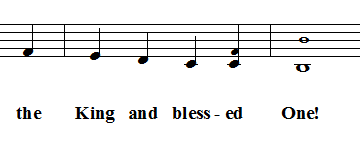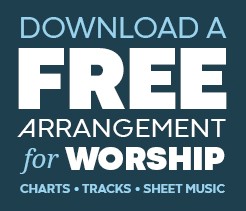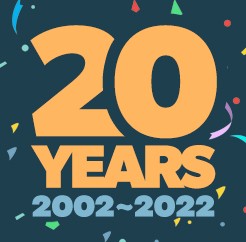Some hymns have such a wide-ranged melody – too high or too low for an average worship leader to sing the entire thing by him or herself. Here’s an idea of how to trim tunes that are giving you a problem.
One of my core tenants of HymnCharts is don’t change the melody! So many arrangers desperately try to jazz up old hymns by adding crazy syncopation to the melody (I just add crazy syncopation to the accompaniment 🙂 ) This defeats the whole purpose of the arrangement: to give congregations a fresh new way to sing their favorite hymns they know and love.
However, once in awhile I’ll tweak melodies a bit to make them easier, depending on the situation. For instance, I’ve recorded Graydon Tomlinson, a talented local worship leader, singing my arrangement of the Palm Sunday hymn All Glory, Laud and Honor. Graydon is your typical male tenor worship leader – and the wide-ranged melody of All Glory ends too low. If you raise the key, then the song will go too high for congregations – it works best in A, Bb and even B (but I think Bb is the best.) Graydon could hit the final low Bb, but the arrangement is upbeat and we felt that ending note of each verse needed some power.
So we compromised – he jumped up an octave at the end. Most churches will have a praise team or choir singing with the male tenor worship leader, and the congregation will be able to follow them as they sing the original melody. The male worship leader will sound like he’s simply improvising.

Graydon sang the smaller notes.
Chord charts, sheet music, tracks, loops and orchestration are available for All Glory Laud and Honor with a hymncharts subscription.




2 Comments. Leave new
Wide ranging melodies are as much a problem with contemporary worship as they are with hymns, especially worship songs that jump up an octave for the chorus and sound fairly boring without the jump. Generally, the problem with hymns is that they are written out for a soprano to do the melody and that’s too high for a lot of voices – moving them down a few keys fixes that. And I suppose I feel like your “typical tenor worship leader” needs to learn to sing in the congregation’s range, not the other way around – although, yeah, when you’re recording a CD, the rules change. And, yeah, there are wide-ranging hymns, as well.
One of the tricks I’ve found is that if you HAVE to change the melody, key the song so the high note is around C or D and then pull UP anything that’s too low, like you did here. It will be less obvious, and even the congregation will be thinking, “hey, that’s the first time I’ve ever been able to sing that song!”
I have a bit of an issue, as well, with WLs who jazz up (or hot rod) the _accompaniment_ of an old hymn because, too often, that means that the congregation is actually singing so _slowly_ that it makes the song _less_ exciting for everyone except the guitar player. And I wouldn’t mess with the rhythms on a familiar song like “Amazing Grace,” (or a Christmas carol) but I do have a version of “Hallelujah What A Savior” that takes the very clunky rhythm of the original and makes it sing like a James Taylor song.
Of course the other option is just not to do songs where the melody is “unsingable.” There are SO many worship songs out there and SO many hymns… if I’m looking at a song for our band and the melody ranges more than an octave, there has to be something else about that song that is SO good that we just have to use it.
And even if the WORDS of the hymn are great, in the world of hymns there are “hymn texts” and “hymn tunes” and there are lots of different combinations that are possible. If I look in my Methodist Hymnal at “All Glory Laud and Honor,” the tune is called “St. Theodolph, 76.76.D.” And then I go to the “Metrical Index” in the back of the hymnal and I see that the tune for “I Love to Tell the Story” is also a 76.76 meter… and you can, indeed, sing the lyrics to “All Glory Laud and Honor” to the tune of “I Love to Tell the Story,” and in some churches, that might be a more popular choice… and there are at least a dozen other hymn tunes to that same meter. Not every 76.76 tune will work for these lyrics, but it does offer another option that is “acceptable” in the hymn world…
This is absolutely terrific- just came across it today. An old hymn done in this way is every bit as exciting and contemporary and relevant as anything out there. Easy and fun to sing with solid lyrics. I don’t know why this is not done more often- updating terrific older melodies, as opposed to writing newer, and often less effective ones. I think even young people would find this every bit as exciting as much of the current worship songs. Spectacular!